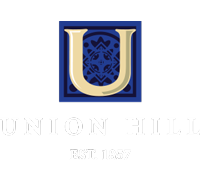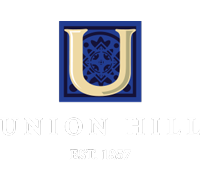HOME SWEET (URBAN) HOME – KC Magazine
By: Katy Schamberger
July 29, 2016
Union Hill and One Light usher in a wave of new opportunities for Kansas Citians who want to live downtown.
Downtown Kansas City’s transformation has been nothing short of remarkable. Once-vacant buildings, run-down blocks and little pedestrian activity outside of typical business hours have evolved into a thriving mix of commercial and residential development sparked by projects like the Sprint Center, Power & Light District and the Kansas City Streetcar, as well as wildly popular events like First Fridays.
Yet people don’t just want to work in or visit downtown Kansas City—they want to live there, too, a demand that’s fueled a flurry of new residential projects. Consider this your VIP tour. Fair warning: you might just want to move downtown when you’re finished!
A House on the Hill
Perched just south of downtown Kansas City awaits Union Hill, which spans 16 blocks and offers an enticing blend of history and modern construction. And if you thought downtown Kansas City’s revitalization is a compelling story, Union Hill just might top it.
One of Kansas City’s oldest continuous neighborhoods, Union Hill was established in 1857. More recently, the area’s preservation and advancement is credited to local developer Bob Frye, who first proposed his plan for Union Hill’s development in his master’s thesis statement, then soon began buying pieces of land in the neighborhood until he fully bought out Union Hill’s original developer, Jim Young, in the late 1980s.
Now three decades later, Union Hill is thriving, home to an appealing mix of development that includes apartments, condominiums, townhomes, single-family homes and commercial buildings. Two new apartment buildings will soon be added to the mix—the Campbell building, opening in June, and the McCoy Building, scheduled to open in September.
John Price, Union Hill’s leasing director, says Union Hill is now home to approximately 1,200 people, and the waiting list continues to grow.
It’s no wonder Union Hill proves especially popular during the warmer months, when the neighborhood’s mature trees, carefully designed landscaping and walkability are in full splendor.
“People don’t always realize how close Union Hill is to everything,” Price says. “You can walk to First Fridays, Crown Center and Union Station. We have two hotels in the neighborhood, plus more than 30 businesses, including restaurants, bars and retail.”
Events are also popular in the neighborhood, an ideal way to bring both residents and visitors together. Price helped start a Food Truck Friday event last year, which drew more than 300 people to a picnic in an unexpected location.
“We ate in Union Hill cemetery,” Price says. “Not a lot of people can say they’ve done that!”
There’s much about Union Hill that makes it an enticing choice for a variety of residents, but the diverse living options take top honors. A mix of apartments, townhomes and condominiums are available in three styles, each thoughtfully designed and carefully built with convenience and comfort in mind.
The Classic Lifestyle collection includes stone and brick architecture inspired by Chicago’s Michigan Avenue. Buildings include Union Hill Place, located near the World War I Memorial and Crown Center; the Michael Diveley Building, Mattie Lykins Bingham Building and Johnston Lykins Building, all part of the Founders community; and M.C. Wood Building townhomes, an ideal blend of affordable urban living with the comfort and features of a full-size home.
For those who covet loft-like features in a more traditional neighborhood setting, Union Hill’s Loft Lifestyle properties include the Allan B.H. McGee Building and, later this year, the John Calvin McCoy Building. You simply have to step inside the McGee Building to see the attention to detail that’s common throughout each Union Hill home. Multicolored LED lights are cleverly placed in the ceiling, welcoming you with a vibrant glow. The contemporary lighting is balanced by the warmth of load-bearing cedar beams and benches made from locally reclaimed wood.
Inside apartments, loft-inspired features like exposed ductwork and open floor plans effortlessly mingle with chrome hardware, serpent-style lighting and spacious kitchens accented with islands. Walk-in pantries offer ample shelving that Price says “justify a Costco trip,” and bathrooms are made more spacious with recessed sinks.
For those who covet luxury, Union Hill delivers. Seven of the neighborhood’s buildings are part of the Platinum Lifestyle collection, inspired by Chicago’s Lincoln Park neighborhood. You’ll be greeted by concrete pineapples that top the entrance gate to the Jacob Ragan Building, part of Founders Phase II that also includes the John Taylor and John Campbell buildings. A stone-paved courtyard features exquisite landscaping and a bubbling fountain, which leads into an elegant lobby complete with marble tile floors.
Apartments in the Jacob Ragan Building, part of Union Hill’s Platinum Lifestyle Collection, offer ample storage, gas cooktops and crown molding.
Inside, floor plans are available in several layouts, including studio, one-bedroom with den and two-bedroom. Kitchens are a haven for cooking aficionados, complete with gas cooktops and electric ovens. Interiors are made even more spacious by 9- and 10-foot ceilings and accented with stylish finishing touches like crown molding and wood plank flooring. Several units offer wood-burning fireplaces and outdoor brick terraces, the perfect spot to savor the view over a morning cup of coffee or evening cocktail.
Although Union Hill offers a range of residential developments, all homes share a number of common features including full-size washers and dryers, walk-in closets, personal intrusion systems and parking. And though you might not immediately associate an historic area like Union Hill with state-of-the-art technology, the neighborhood is home to three buildings—the Taylor, Ragan and McGee—that were the first in the world to be built with Google Fiber in the walls, rather than being retrofitted for fiber Internet and television. Additionally, select buildings include Nest thermostats.
Yet history remains a vital part of Union Hill. Look up at the Greenlease Cadillac Building, for example, and you’ll notice Cadillac emblems, reminders of the building’s past as the first Cadillac dealership west of the Mississippi. It’s that sort of thoughtful approach—and Frye’s visionary leadership—that propelled Union Hill into what might be its most successful chapter yet.









